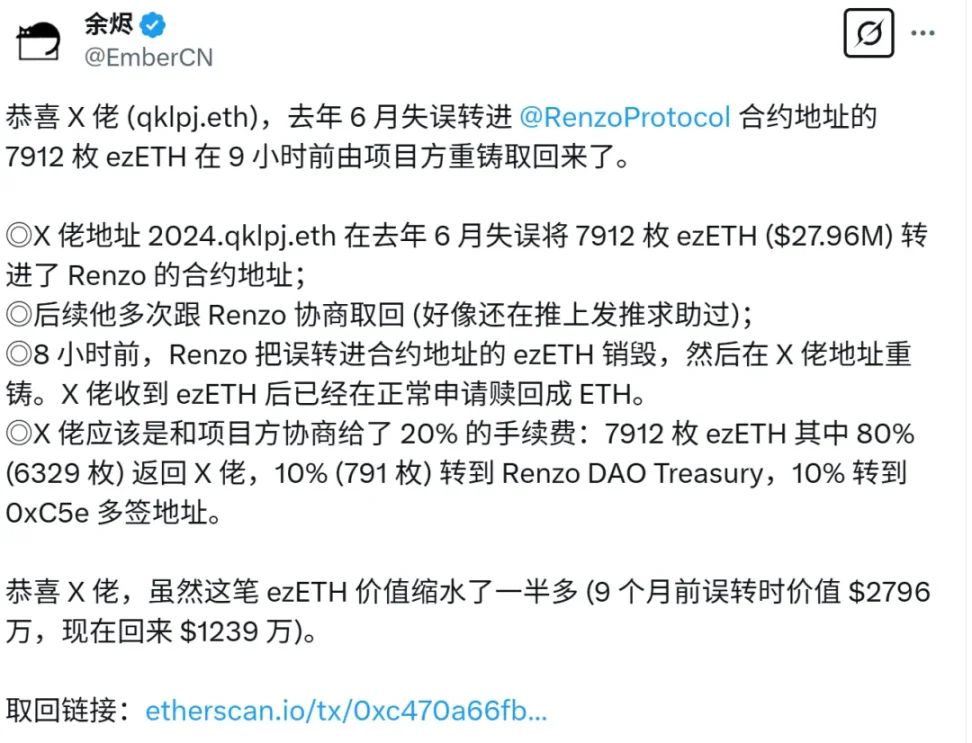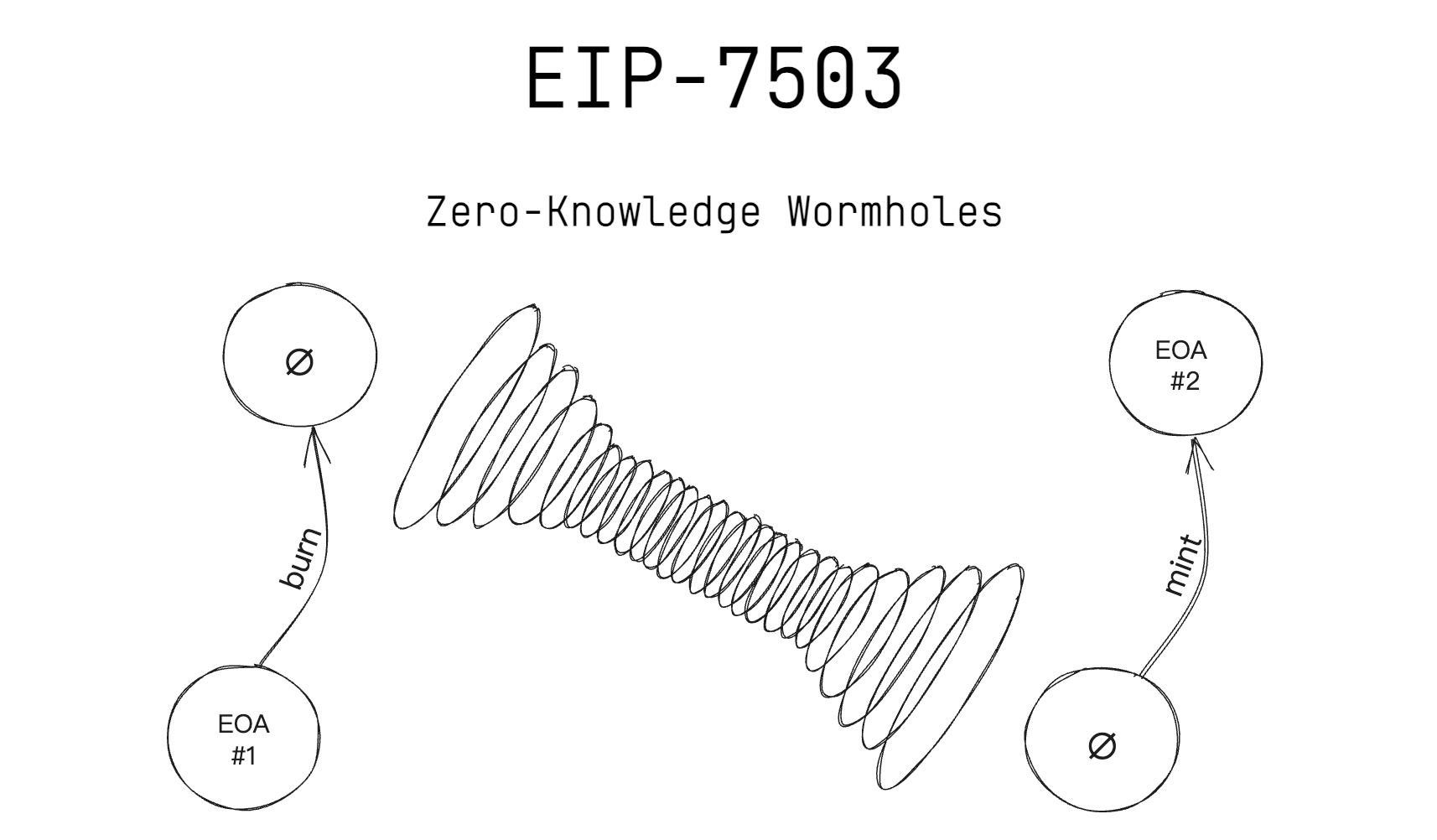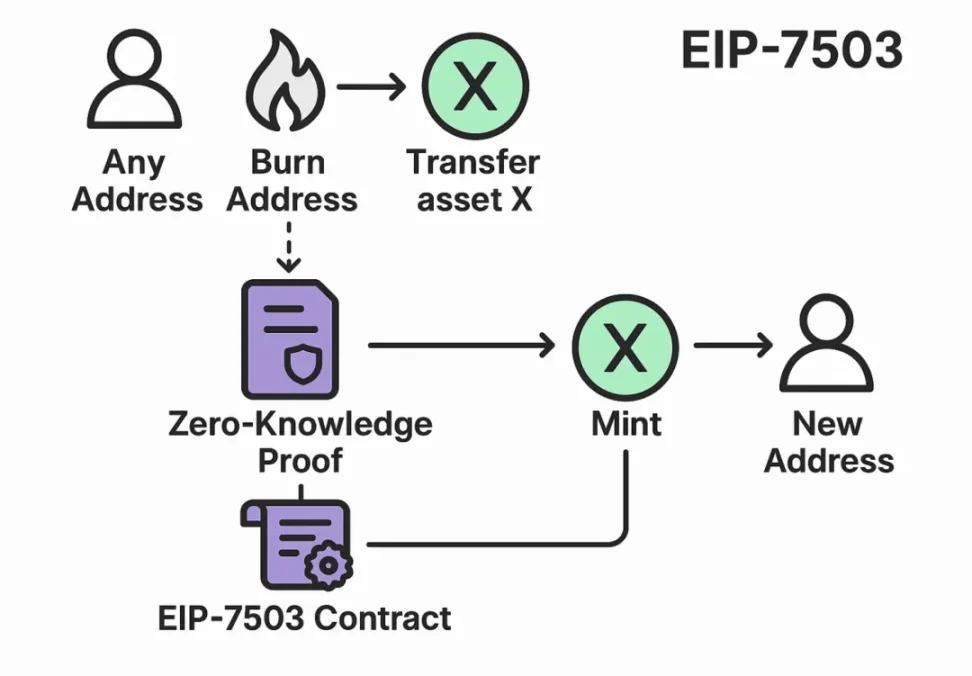The key technical point of EIP-7503 is that a contract on the chain can complete zero-knowledge verification of a burn transaction and mint new equivalent assets.
Written by: Huang Shiliang
Privacy and anonymity issues have always been mainstream concerns in cryptocurrency and are among the most important issues in the industry, especially now that almost all users in the cryptocurrency space have to use centralized KYC exchanges. Coupled with the current policies in the United States, making legality and compliance mainstream, the crypto world is facing a serious crisis of anonymity failure.
Today, I came across a news story that reminded me of an EIP I had seen before. I believe this is a very worthwhile method for laundering coins, which can revolutionarily solve the dilemma of Ethereum's anonymity failure.

The news is about an incident six months ago where an individual accidentally transferred an asset (an ERC20 token with the ability to mint new coins) to the project's contract address. Theoretically, this contract address cannot retrieve the asset because it has no private key. However, the project team surprisingly minted a new asset for that user. This is equivalent to the project team acknowledging that the user had burned an asset, and then the project team issued an equivalent asset back to the user.
It's like if you transfer USDT to a contract address, which cannot withdraw this USDT unless there is a function written in the contract beforehand on how to extract that asset. But you can contact Tether to have them mint an equivalent amount of USDT for you. Because Tether knows that your coin must have been burned, they can then give you a new identical one, thus solving the problem.
The question arises: if Tether directly transfers the newly minted USDT to a completely new address, does that mix up all the historical transaction links of the original USDT?
This represents a brand new method of laundering coins.
There is an EIP specifically designed to implement this, EIP7503 (https://eip7503.org/).

The basic principle of EIP7503 is as follows:
Any address can transfer asset X to a black hole address (zero address, no private key, transferring assets equals destruction).
With this transfer transaction and the user's private key, a zero-knowledge proof file can be generated.
Then, using this zero-knowledge proof file, an equivalent asset X can be minted from a contract address implemented by EIP7503, and this new asset X can be transferred to a completely new address, entirely unrelated to the original address.
The key technical point of EIP7503 is that a contract on the chain can complete zero-knowledge verification of a burn transaction and mint new equivalent assets.

(I must say, the text-to-image function of ChatGPT 4o is really impressive in conveying the meaning of images.)
The current Ethereum consensus mechanism certainly does not allow the burning of ETH and then using the burn transaction to mint an equivalent amount of ETH at a contract address.
ETH can only be minted by the block size of the PoS consensus mechanism; this is the core rule of Ethereum and cannot be changed.
However, EIP7503 can collaborate with ERC20 asset issuers, or ERC20 asset issuers can implement the coin laundering function of EIP7503 in their own tokens.
For example, USDT could incorporate such a function, though it is highly unlikely that USDT would do this, as it would undermine its blacklist mechanism; I am just using this as an example.
Currently, USDT has only one issuer, which is the USDT contract controlled by Tether. This contract has the function to mint new USDT coins, and this minting function can only be initiated by Tether.
If Tether fully trusts EIP7503, it could implement a new USDT minting function in the USDT contract according to EIP7503 rules, allowing burn transactions of USDT to call this new minting function through zero-knowledge proofs, and transfer the newly minted coins to a completely new address.
This would completely sever the historical transaction records of USDT.
This is a very thorough method of laundering coins.
If EIP7503 is combined with the upcoming major Ethereum upgrade, Pectra, which allows contracts to pay gas fees, the coin laundering would be even more complete.
Because simply using EIP7503 to launder coins requires users to obtain some gas fees from elsewhere. If users use the coins laundered through EIP7503, they would directly be completely new, with no gas fees associated with the Ethereum address, and then spend these coins through the gas payment function enabled by the upcoming Pectra upgrade, achieving even greater anonymity.
Currently, EIP7503 has not received support from the Ethereum Foundation; in the Ethereum EIP list, https://eips.ethereum.org/all, EIP7503 is still just a draft.
I think this is quite important, and there is a long way to go.
免责声明:本文章仅代表作者个人观点,不代表本平台的立场和观点。本文章仅供信息分享,不构成对任何人的任何投资建议。用户与作者之间的任何争议,与本平台无关。如网页中刊载的文章或图片涉及侵权,请提供相关的权利证明和身份证明发送邮件到support@aicoin.com,本平台相关工作人员将会进行核查。




